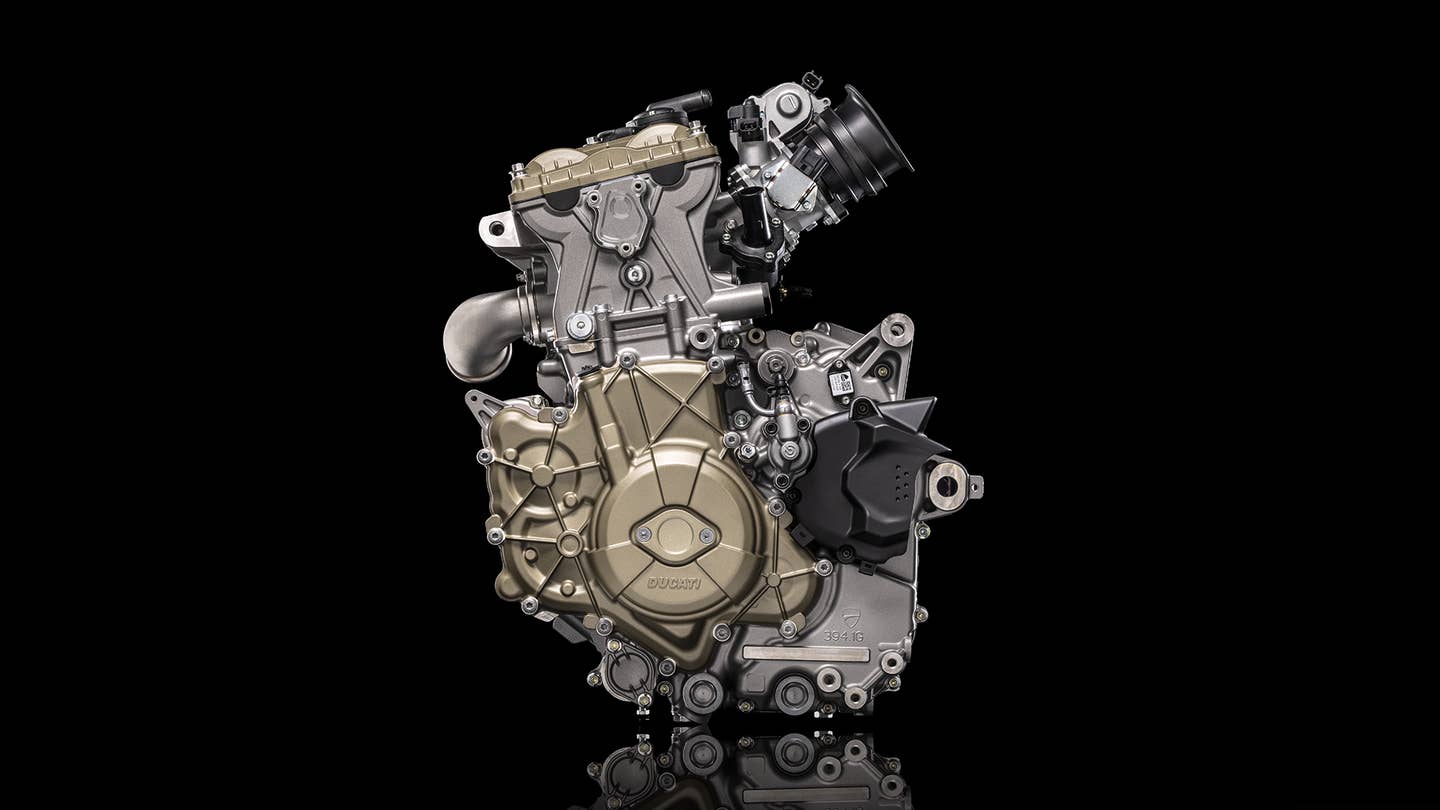Ducati Just Built the World’s Most Powerful Single-Cylinder Engine
The 659cc Superquadro Mono produces a whopping 85 hp and revs up to 10,250 rpm.

Motorcycle builder Ducati is no stranger to building impressive machines, and its latest creation is nothing short of incredible. The Italian company has just created the most powerful single-cylinder engine in the world, and it did so in a unique way. The record-breaking quad-valve 659cc unit has no conventional valve springs but still manages to crank out 77.5 horsepower at 9,750 rpm with a standard exhaust. That figure then goes up to 85 hp with a racing exhaust.
Called the Superquadro Mono, it revs out to 10,250 rpm, which Ducati claims makes it the highest-revving single-cylinder engine currently in production. It is derived from the larger twin-cylinder 1299cc Panigale and shares a few important parts with it, like the piston, valves, and design of the combustion chamber.
The high revs are enabled by a few key aspects of the design. The first is the extreme bore-to-stroke ratio. The piston's diameter is 116 mm while the crankshaft's stroke is only 62.4 mm, or about 2.5 inches. The other is the "desmodromic" valvetrain, which is extremely interesting.
Ducati is the only remaining major manufacturer to use the desmodromic valve system, which has a cam lobe not only to open the valves like a conventional engine but also to close it. This may sound confusing, but it attempts to address a key issue with high-revving engines: valve float. Back before metallurgy had advanced to where it is today, valve float at high RPMs was a limiting factor in engine performance. The springs of the time either couldn't close the valves fast enough or high spring pressures led to premature engine wear. The solution that a few companies came up with, mostly for racing, was to include another lobe on the camshaft to close the valve, as well as the conventional one to open it. In this way, the valve would be forced shut and pesky springs were unnecessary.

In theory, no springs are needed, but in practice, Ducati still maintains a few. They only exist to keep the valves closed at rest, not actively shut them. This reduces wear in the system, which is the big reason why Desmodromic valves never really caught on. The Italian company claims it's even figured that out, though. Oil changes happen every 9,000 miles with valve clearance checks every 18,000.
Two balance shafts ensure that the vibrations at such high engine speeds are likewise kept in check. Other interesting details include several magnesium components, including the alternator, clutch, and head covers. The massive 46.8 mm intake valves are also made from titanium, although despite all of this lightweight metal bolted to the engine, no weight figure was specified.
All in all, the Superquadro Mono is a reminder of why we love internal combustion. In the era of electrification, automakers aren't investing a ton of money into making new high-revving, naturally aspirated engines anymore. Motorcycles are different, sure, but this all reminds us of just how impressive, interesting, and exciting a pure ICE machine taken to its limits can be.
Got a tip? Email us at tips@thedrive.com
